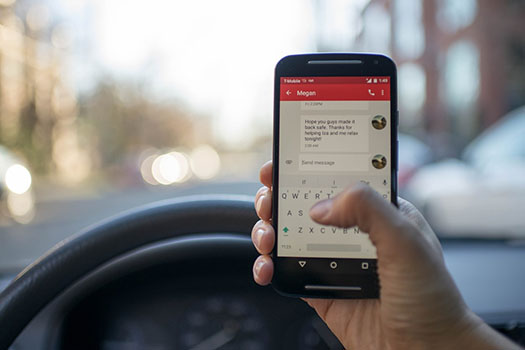Car accidents are the third leading cause of death in the United States, after heart disease and cancer. An average of six million collisions occur annually, resulting in thousands of fatalities and millions of dollars in damages. Unlike the other leading causes of death, though, accidents are largely preventable tragedies.
Most accidents are attributable to a handful of common factors, like speed, distraction, or alcohol. By using good judgement and common sense, you can help protect yourself and your family from becoming statistics on the road. Here are seven tips for preventing a car accident this year.
1-Minimize distractions
Distracted driving has been identified as the number one cause of car accidents. With cell phones an almost constant presence in the modern world, it’s harder than ever to be a focused driver. But focus is the most critical component of safe driving, so no matter what pops across that screen, never turn your attention away from the road.

Of course, other things have been distracting drivers since the invention of the automobile. Be sure not to let pets or kids get too rowdy while you’re driving, and keep loose articles stashed in a secure place so that a sudden turn doesn’t unleash a volley of projectiles. Be cautious with hot drinks that could spill on you.
2-Take it slow
Many accidents could be prevented by simply slowing down a bit. When people become rushed or stressed, they tend to push the limits of the road by driving at speeds that are over their comfort level or well over the legal speed limit.
Speeding greatly reduces the reaction time you’ll have to avoid another car, correct hydroplaning or an icy skid, or to stop for animals or pedestrians that can suddenly materialize in front of you. Go at least ten miles per hour slower than you normally would in bad weather or poor visibility.
3-Pause a moment before you go
Even habitually cautious drivers can find themselves in an unforeseen accident. A side collision, or “T-bone”, can be a very dangerous situation, and occurs when a driver misses or intentionally runs a red light or stop sign and hits another car. Most of the safety technology built into cars, such as crumple zones or air bags, involves front-end protection, leaving the sides vulnerable to a major impact.
For this reason, T-bone collisions often cause significant head and spine injuries. Before proceeding into any intersection, be sure that no other cars are coming through it. When your light turns green, pause a few seconds to scan the opposing traffic for light-runners before you hit the gas yourself.
4-Treat others on the road as a community
Have you ever had a line of traffic block a turn you needed to make, until one driver stopped to wave you through? Do you remember the gratitude you felt? That is the way everyone on the road should behave. The attitude you have toward the other drivers around you will affect the way you drive.

If you are courteous, trusting, and respectful of others around you, treating them as you would want them to treat you and your family, you will find yourself using better and safer driving habits. Such courtesies tend to be infectious too, inspiring other drivers to do the same.
5-Don’t skip out on car maintenance
Car maintenance can be an expensive hassle, and it’s easy for us to ignore a problem and put off repairs for as long as the car will let us get away with it. Right up until it doesn’t. Car problems tend to follow Murphy’s law, striking at the most inopportune moment possible, leaving you stranded in foul weather or in the middle of a busy road.
Squeaky timing belts, oil leaks, and worn down brakes and tires are ticking time bombs on the road, and are just a few of the problems that can suddenly render a moving vehicle uncontrollable. Keep to the recommended maintenance schedule, and repair small problems before they become big ones.
6-Learn bad weather driving skills
Learning how to navigate treacherous road conditions is an extremely important skill to have. Of course, the first thing any driver should do in any adverse conditions is drive slower, sometimes extremely slow. As you spend more time on icy or snow-packed roads, you will learn to judge your traction by feel, and gain confidence in maintaining control of your car.
Keep a healthy distance from other cars, too, because not everyone uses the same good judgement. Shallow standing water can also be deceptive, so cut your speed to avoid hydroplaning.
7-Always wear that seat belt
Buckle up to save a life. No matter how many times this slogan has been repeated since the 1980s, when seat belt laws began to take effect, seatbelt stats remain discouraging. Recent surveys show that many adults are not strapping in when they drive. And, a few are still not strapping their children in either.
Predictably, the highest percentage of fatalities occurs amongst the unbelted. Make seatbelt use a habit for yourself and a non-negotiable for anyone who rides with you.
Samantha Tung is a contributing writer and media specialist for Caliber Collision. She often contributes content for a variety of car safety blogs.



